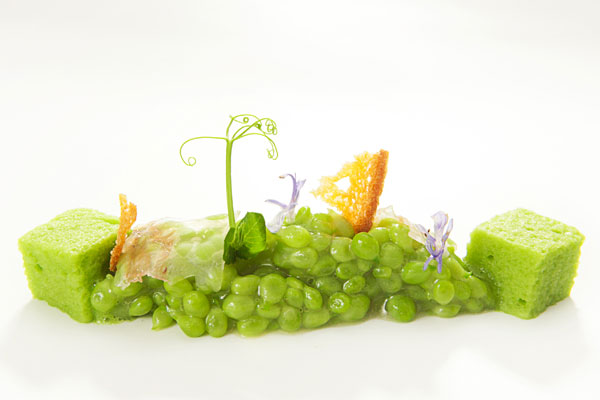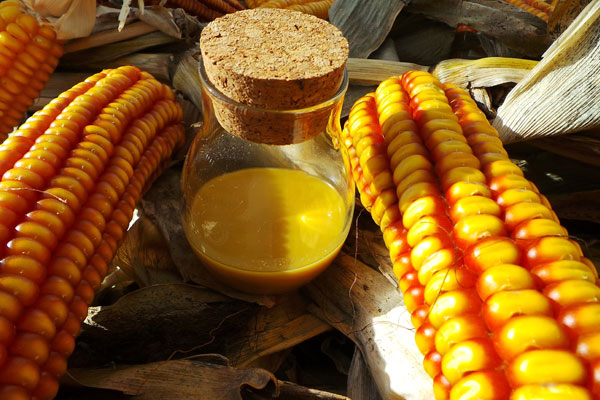Header: Eneko Atxa speaks at #50BestTalks and Azurmendi restaurant
As part of Farm Africa’s Chefs for Change initiative, Azurmendi chef-owner Eneko Atxa analysed the origin and the human footprint of one of his dishes. The result was an insightful journey through sustainability, recovered produce and nearly lost communities, which he discussed at #50BestTalks: Life Cycle, presented by Miele, at the Basque Culinary Center in San Sebastian.
At Azurmendi, the restaurant that won the Sustainable Restaurant Award, sponsored by Dekton by Cosentino, for The World’s 50 Best Restaurants 2018, Eneko Atxa has long been marrying sustainability with outstanding flavours. But it’s only when you zoom in on the single ingredients that make up one of his dishes that you truly understand what ‘sustainability’ means to the Basque chef.
For the launch of Chefs for Change, a project spearheaded by international development charity Farm Africa that sees cooks supporting sustainable development programmes with farmers in Africa, Latin America and Asia, Atxa – one of the initiative’s founding chefs – analysed the human footprint behind his dish ‘Teardrop peas with txakinarto bread’.
“When you look at the ingredients of this dish, you see the teardrop peas, the red onion from Zalla and the Mungia corn. But what is behind these ingredients?” asked Atxa. “We feel that behind the curtain of the product, like in theatre, you can find incredible stories, and we have a responsibility to push these stories.”
Teardrop peas with with txakinarto bread
The teardrop pea – which has been referred to as ‘vegetable caviar’ – is a sweet and delicate type of pea that forms the basis of Atxa’s dish. The chef sources it from local farmer Guillermo Delgado, one of a handful of teardrop pea growers in the region of Biscay. “Guillermo is a small producer who lives in fear,” said Atxa, “because with all his hard work, he never knows if he will be able to sell his harvest.”
Explaining how sustainability takes different shapes when it touches different people, Atxa said: “We guarantee Guillermo that we will buy all of his produce. Whenever we speak to the farmers, they’re not sure, with nature and the weather, if they will be able to sell what they grow. We have a commitment to our farmers to buy everything they show us, so we are contributing to their security and tranquillity.”
Atxa also discussed the story behind the red onion from Zalla, a distinctive product known for its mild and sweet flavour, native to a small area in the region of Biscay. He uses the vegetable in many of his dishes and considers it an important ingredient of many traditional recipes, such as salsa vizcaina, a popular red Basque sauce, but the purple onion was about to disappear less than a decade ago.
“We decided to collaborate with the only producer who was growing the onion, Ana Mari Llaguno, in order to protect it and recover it. But we understood that it didn’t end there. We also started promoting the product in magazines and recipes and with the wider chef network,” said Atxa.
“We are promoting the product but we are also promoting something more important than the product: the community of women behind it. Five years ago, Ana Mari was the only producer, but now there are five or six women growing the onion. And because she now feels the support of the chefs and the community, Ana Mari has started recovering other products too. For us, that’s sustainability.”
Mungia corn and txakinarto
The teardrop peas and red onion in Atxa’s dish are served with a crunchy bread made from a unique type of corn flour, indigenous to the municipality of Mungia in the Basque Country, known as txakinarto. The small-sized corn variety is cultivated alongside the local Mungiako indaba bean, which supports its growth. With the industrialisation of agriculture and the introduction of other varieties after the Second World War, Mungia corn and txakinarto almost disappeared.
“Luis Azillona is the producer behind the Mungia corn. In the region of Biscay there used to be a lot of mills that produced txakinarto flour. It’s a hard job, undervalued and costly, but what they produce is incredible, it’s a special and unique product. So we asked ourselves: how can we help?” said Atxa.
Seeing a need to promote the mills as much as the product, Atxa and his team started to organise tours for fellow chefs, journalists and foodies to visit Azillona’s mill. “People went to the farm and saw the magic and history of the mill,” said Atxa. “We started going with young people too and we feel that they are understanding that jobs such as the miller can be interesting to recover.”
“Today, we have a community of about 30 farmers working with us. About 40% of them are young people, and they’re 50% male and 50% female,” said Atxa. “This is just an example, a simple dish, but we feel that we have to work every day with responsibility towards our society, the landscape, the farmers, the fishermen and our community. That’s our commitment.”
Related to what Atxa is already doing with local producers, his participation in Chefs for Change will see the Basque cook visiting one of Farm Africa’s sustainable farming programmes in Africa, Latin America or Asia, to see how the local farmers work and to collaborate with the charity on how to support them and develop their product.
“We all need to do something because if we all have an attitude that what we do is not changing the world, then everything would just change for worse. We have to show that change doesn’t happen if you’re standing still,” said Atxa.
Read more about Chefs for Change on the website, chefsforchange.org.
Now watch the launch of Chefs for Change at #50BestTalks: Life cycle, featuring chefs Joan Roca and Gaggan Anand with Farm Africa CEO Nicolas Mounard:
Watch all the highlights from #50BestTalks, presented by Miele, including talks and interviews with chefs Clare Smyth, Paul Pairet, Christina Tosi and Dan Barber:
Follow The World’s 50 Best Restaurants on YouTube, Facebook, Instagram and Twitter for more videos, interviews and news from around the world.

